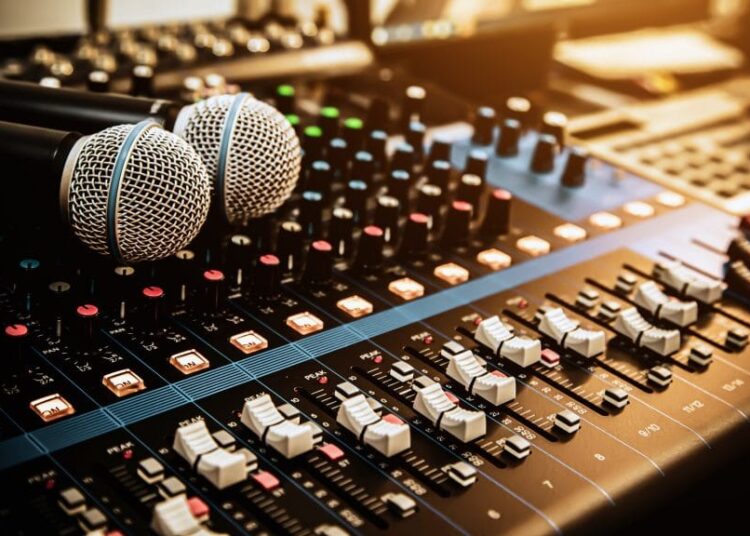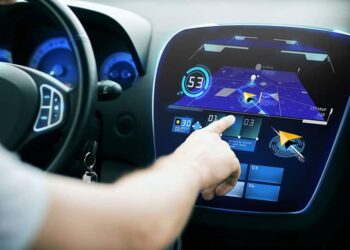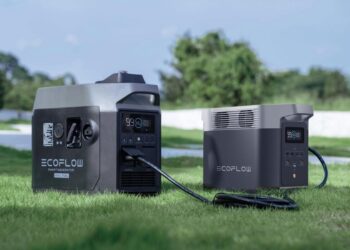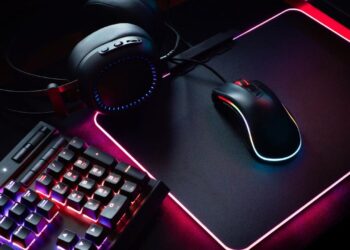Microphones and Preamps
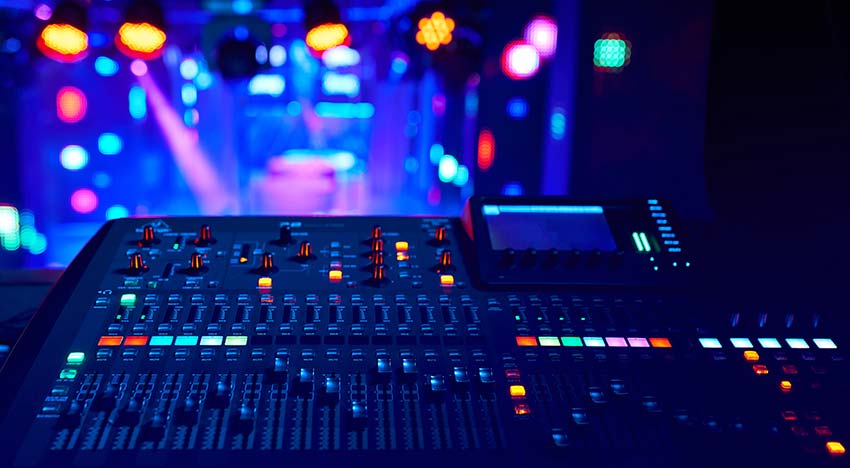
The journey of any sound into the digital or analog realm begins at the source, making the microphone and its accompanying preamplifier arguably the most critical components in a pro audio studio.
A. Microphones: Capturing Every Nuance: Microphones are the ears of your studio, converting acoustic energy into electrical signals. Their diversity is vast, each type offering unique characteristics:
* Condenser Microphones: Known for their sensitivity, wide frequency response, and detailed capture, especially in the high frequencies. They are ideal for vocals, acoustic instruments, drum overheads, and delicate sound sources where capturing subtle nuances is key. Large-diaphragm condensers are prized for rich vocal tones, while small-diaphragm (pencil) condensers excel at transient response for instruments like acoustic guitars or percussion. Many high-end studios feature multiple large-diaphragm condensers to offer a variety of sonic flavors for different vocalists and instruments.
* Dynamic Microphones: Rugged, durable, and capable of handling high Sound Pressure Levels (SPL), making them excellent for drums, electric guitar cabinets, and loud vocals (especially live performance). Their robust construction makes them less sensitive to room acoustics, often favored for punchy, direct sounds. The Shure SM57 and SM58 are classic examples, renowned for their versatility and durability in both studio and live settings.
* Ribbon Microphones: Revered for their warm, smooth, and natural sound, particularly flattering on brass instruments, guitar amps, and certain vocals. They have a distinct figure-8 polar pattern, making them useful for capturing room ambiance or for specific stereo miking techniques. Modern ribbon microphones have improved durability, making them more resilient than their vintage counterparts.
* Specialty Microphones: This category includes boundary microphones (for conferences, stage productions), shotgun microphones (for film, distant sound capture), USB microphones (for podcasts, home recording simplicity), and various stereo microphone configurations (e.g., matched pairs for X-Y or ORTF techniques, or binaural microphones for immersive 3D audio). Each serves a specific purpose in capturing sound unique applications. The selection of the right microphone is fundamental to achieving the desired sonic character from the very first stage of recording.
B. Preamplifiers: Boosting and Shaping the Signal: A microphone’s signal is inherently weak and requires a preamplifier to boost it to a usable line level. But preamps do more than just amplify; they impart character:
* Clean and Transparent Preamps: These aim to amplify the signal without adding any coloration, preserving the microphone’s true sound. They are crucial when accuracy and neutrality are paramount, allowing the engineer to sculpt the sound later in the mixing process. High-quality interfaces often have built-in transparent preamps.
* Colored or “Character” Preamps: Many legendary preamps (e.g., Neve, API, Universal Audio) are prized for the unique sonic “flavor” they add to the signal, often a subtle harmonic richness, warmth, or punch. This coloration can make a vocal or instrument sit better in a mix, adding a desired sonic texture from the initial recording stage. Choosing between clean and colored preamps is a crucial artistic decision in shaping the raw sound.
* Channel Strips: These integrate a preamp with other essential processing tools like equalizers (EQ) and compressors into a single unit. A good channel strip provides a complete front-end solution for a single vocal or instrument track, allowing for initial shaping of the sound before it even hits the Digital Audio Workstation (DAW).
Digital Audio Workstations (DAWs) and Software
The modern studio revolves around the Digital Audio Workstation (DAW), a comprehensive software environment where audio is recorded, edited, mixed, and mastered.
A. Leading DAW Platforms: Choosing the right DAW is a foundational decision, as it dictates much of the workflow and available features:
* Pro Tools: Often considered the industry standard for recording, mixing, and post-production in professional studios worldwide due to its robust audio engine, advanced editing capabilities, and comprehensive mixing console. Its meticulous editing tools make it a go-to for film scoring and large-scale projects.
* Logic Pro X (Mac only): A powerful and intuitive DAW popular among musicians and producers, known for its extensive library of virtual instruments, effects, and loops, along with strong MIDI capabilities and innovative features like Drummer and Smart Tempo. It offers incredible value for Mac users.
* Ableton Live: Celebrated for its unique session view, making it ideal for live performance, electronic music production, and spontaneous composition. Its powerful warping and looping capabilities are unmatched for creative sound manipulation and improvisation, appealing to electronic artists and DJs.
* FL Studio: Highly popular in hip-hop and electronic music genres, known for its pattern-based sequencer, robust synth engine, and user-friendly interface. Its powerful piano roll editor makes MIDI composition fluid and intuitive.
* Cubase/Nuendo: Long-standing DAWs from Steinberg, offering comprehensive features for music production, audio post-production, and game audio, known for their powerful MIDI capabilities, advanced mixing console, and excellent audio quality. Nuendo is particularly strong in broadcast and game audio.
* Reaper: A highly customizable, lightweight, and affordable DAW known for its efficiency and flexibility, popular among independent artists and small studios. Its open-ended nature allows users to tailor it precisely to their workflow needs.
B. Virtual Instruments and Synthesizers: DAWs are complemented by a vast ecosystem of virtual instruments and synthesizers, which are software plugins that emulate or create sounds:
* Sample Libraries: Vast collections of pre-recorded sounds of real instruments (orchestras, pianos, drums) that can be played via MIDI. High-quality sample libraries can make a digital composition sound incredibly realistic.
* Software Synthesizers (Soft-Synths): Generate sounds electronically, ranging from emulations of classic analog synths to entirely new digital soundscapes. They offer immense sound design possibilities, crucial for electronic music, film scores, and experimental audio.
* Drum Machines and Samplers: Software versions of classic drum machines or dedicated samplers that allow producers to manipulate audio snippets and create unique beats and sound collages.
C. Audio Effects Plugins (EQ, Compression, Reverb, etc.): Once audio is recorded, audio effects plugins are used to shape, enhance, and process the sound. These include:
* Equalizers (EQs): Tools to adjust the balance of frequencies in a sound, allowing engineers to clean up muddiness, add brightness, or sculpt tones to fit the mix.
* Compressors/Limiters: Control the dynamic range of a signal, making quiet parts louder and loud parts quieter, to achieve a more consistent and punchy sound.
* Reverbs and Delays: Simulate acoustic spaces or create rhythmic echoes, adding depth, space, and atmosphere to a sound.
* Modulation Effects: Chorus, flanger, phaser add movement and richness.
* Distortion/Saturation: Add harmonic richness, warmth, or aggressive grit to sounds.
The quality and variety of these plugins are crucial for mixing and mastering, allowing engineers to achieve polished, professional results.
D. MIDI Controllers and Production Interfaces: While software-based, interaction with DAWs often benefits from hardware MIDI controllers. These range from keyboard controllers (mimicking pianos), drum pads, and fader/knob controllers that allow for tactile control over virtual instruments, mixing parameters, and effects. They enhance the creative workflow, making the digital production process feel more intuitive and musical, allowing producers to “play” the software as they would a physical instrument.
Monitoring Systems
![]()
You can only mix what you can truly hear. Accurate monitoring systems are arguably the single most important investment in a pro audio studio, ensuring that what you hear is an accurate representation of your sound.
A. Studio Monitor Speakers: Unlike consumer speakers designed for flattering sound, studio monitor speakers are engineered for flat frequency response and minimal coloration, aiming to provide an unhyped, accurate representation of your audio. This allows engineers to make precise mixing and mastering decisions, confident that their work will translate well to various playback systems. Monitors come in different sizes (affecting bass response) and configurations (2-way, 3-way, active/passive). Investing in high-quality monitors (e.g., KRK, Yamaha HS series, Genelec, Neumann) is crucial for critical listening.
B. Studio Headphones (Open-Back and Closed-Back): Complementing speakers, studio headphones offer a different perspective and are essential for detailed listening, checking for anomalies, and monitoring during tracking to prevent microphone bleed.
* Closed-back headphones: Provide excellent isolation, making them ideal for vocalists or musicians recording in the same room as microphones, preventing monitor sound from bleeding into the mic. (e.g., Beyerdynamic DT 770, Audio-Technica ATH-M50x).
* Open-back headphones: Offer a more natural, spacious soundstage and less ear fatigue, making them preferred for critical mixing and mastering decisions, as they simulate a more “room-like” listening experience. (e.g., Sennheiser HD 650, Beyerdynamic DT 990 Pro).
Having both types is often ideal for a comprehensive monitoring setup.
C. Acoustic Treatment: Taming the Room: Even the best monitors will sound misleading in an untreated room. Acoustic treatment is a critical, often overlooked, studio essential. This involves using absorption panels (to reduce flutter echoes and control reflections), bass traps (to manage low-frequency buildup), and diffusers (to scatter sound waves). Properly treating your studio space minimizes unwanted room resonances and reflections, ensuring that your monitors accurately portray the sound, allowing you to make reliable mixing decisions that translate well to other listening environments. Professional acoustic treatment is as vital as the speakers themselves for truly accurate monitoring.
D. Monitor Controllers: A monitor controller provides a central hub for managing multiple sets of studio monitors, headphones, and input sources. It allows for seamless switching between different speaker pairs (to check mixes on various systems), precise volume control, and often includes talkback microphones and headphone outputs. A good monitor controller ensures consistent and transparent signal routing to your monitoring chain, streamlining the listening workflow and protecting the integrity of your audio signal.
Essential Signal Processing and Routing
Beyond the core capture and monitoring, a professional studio relies on various hardware and software tools to process, route, and enhance audio signals.
A. Audio Interfaces: The Digital Bridge: An audio interface is the crucial link between your analog microphones/instruments and your digital DAW. It converts analog signals into digital data for your computer and converts digital data back into analog for your monitors and headphones. Key features include:
* High-Quality Converters: Essential for preserving audio fidelity during analog-to-digital (A/D) and digital-to-analog (D/A) conversion.
* Low Latency: Important for comfortable monitoring during recording without distracting delays.
* Multiple Inputs/Outputs: For connecting multiple microphones, instruments, and monitor speakers.
* Phantom Power: Necessary for condenser microphones.
Popular brands include Universal Audio, Focusrite, Antelope Audio, and RME, offering a range of options from simple 2-input units to complex multi-channel systems for larger studios.
B. Outboard Gear (Hardware Processors): While plugins offer immense versatility, many professional studios still incorporate outboard gear – dedicated hardware processors – for their unique sonic characteristics:
* Hardware Compressors: Valued for their specific sonic “glue” and musical compression, distinct from software emulations.
* Hardware EQs: Prized for their tactile control and unique tonal shaping.
* Reverbs and Delays: Certain classic hardware units offer unparalleled depth and character that are difficult to fully replicate in software.
While not strictly “essential” for a beginner, outboard gear adds a level of sonic sophistication and workflow enhancement that many seasoned pros rely on, providing a tactile and often richer sonic experience.
C. Patchbays: Flexible Signal Routing: In larger studios with numerous pieces of hardware, a patchbay becomes an indispensable tool. It centralizes all audio inputs and outputs into a single panel, allowing engineers to quickly and flexibly route signals between different microphones, preamps, compressors, EQs, and the audio interface using short patch cables. This eliminates the need to constantly re-cable equipment directly, streamlining workflow, speeding up setup times, and encouraging creative signal chains. It’s the central nervous system for complex analog setups.
D. Power Conditioners and Uninterruptible Power Supplies (UPS): Protecting valuable studio equipment from power fluctuations is crucial. Power conditioners filter out electrical noise and provide surge protection, ensuring clean, stable power to sensitive audio gear. For critical systems (like computers and hard drives), an Uninterruptible Power Supply (UPS) provides battery backup power during outages, allowing for safe shutdown of equipment and preventing data loss. This essential gear safeguards your investment and workflow from electrical anomalies.
Specialized Tools and Workflow Enhancements
As studios evolve, specialized tools and workflow enhancements become part of the professional arsenal, pushing creative boundaries and optimizing efficiency.
A. MIDI Sequencing and Orchestration Tools: For composers and producers, advanced MIDI sequencing and orchestration tools within DAWs or as standalone applications enable the creation of complex arrangements using virtual instruments. Features like score editors, advanced quantization, humanization, and expression controls allow for highly realistic and nuanced performances, bridging the gap between digital composition and live instrumentation. Dedicated hardware sequencers also offer a tactile and intuitive way to build musical ideas.
B. Calibration Microphones and Room Correction Software: To ensure truly accurate monitoring, calibration microphones and room correction software (e.g., Sonarworks SoundID Reference) are invaluable. A calibration mic measures the acoustic response of your monitors within your specific room, and the software then generates a corrective EQ curve to flatten the frequency response and compensate for room anomalies. This ensures that what you hear from your monitors is as neutral and accurate as possible, eliminating guesswork in the mixing process.
C. Digital Mixing Consoles and Control Surfaces: While many mix in-the-box (within the DAW), digital mixing consoles or control surfaces offer tactile control over mixing parameters. These devices feature physical faders, knobs, and buttons that map to controls within the DAW, providing a more intuitive and hands-on mixing experience. They allow engineers to use their ears and muscle memory, speeding up the mixing process and often leading to more musical decisions compared to mouse-based adjustments.
D. Mastering Software and Loudness Meters: The final stage of audio production is mastering, which optimizes a mix for commercial release. Mastering software suites provide specialized tools for subtle EQ, multi-band compression, limiting, and stereo imaging. Crucially, loudness meters (e.g., conforming to EBU R128 or AES standards) are essential tools for ensuring the final master meets industry-standard loudness specifications for streaming platforms and broadcast, preventing issues like “loudness wars” and ensuring consistent playback levels across various media.
E. Advanced Sample Libraries and Sound Design Tools: For sound designers and film composers, vast advanced sample libraries provide meticulously recorded and curated sounds, from orchestral instruments to ambient textures and cinematic impacts. Dedicated sound design tools (e.g., granular synthesizers, spectral processors, convolution reverbs) allow for extreme manipulation and creation of unique sound effects, textures, and atmospheres, essential for crafting immersive sonic landscapes for film, games, and experimental music.
Democratization, Workflow, and Future of Sound
The evolution of pro audio essentials has profound implications for artists, the industry, and the very nature of sound creation.
A. Democratization of Professional Audio: The increasing affordability and accessibility of high-quality DAWs, interfaces, and microphones have led to the democratization of professional audio. Artists and producers can now create studio-quality music and content from home studios without requiring access to expensive commercial facilities. This has fostered an explosion of independent music, podcasts, and digital content, diversifying the global sonic landscape and lowering barriers to entry in the creative industries.
B. Hybrid Workflows (Analog and Digital Integration): The modern studio often embraces hybrid workflows, seamlessly integrating the best of both analog hardware and digital software. Engineers leverage the sonic character of outboard gear for specific processing while enjoying the flexibility, recallability, and efficiency of in-the-box mixing within their DAWs. Audio interfaces with advanced routing capabilities and digital patching systems facilitate this integration, creating powerful and versatile production environments that combine classic warmth with modern precision.
C. Immersive Audio Production (Dolby Atmos, Spatial Audio): A major frontier in pro audio is immersive audio production, moving beyond stereo to create three-dimensional soundscapes. Tools and workflows for formats like Dolby Atmos and Sony 360 Reality Audio are becoming essential. This requires specialized DAWs, rendering engines, and monitoring setups (often with numerous speakers) to position sounds precisely in a 3D space, revolutionizing music, film, gaming, and virtual reality experiences by providing unparalleled sonic realism and engagement.
D. AI in Audio Production (Assisted Mixing, Mastering, Restoration): Artificial intelligence is beginning to play a significant role in audio production, though not yet replacing human engineers. AI-powered tools can assist with tasks like automatic mixing (balancing levels, applying basic EQ), intelligent mastering (suggesting optimal loudness, dynamics), vocal tuning, and advanced audio restoration (removing noise, clicks, hums). While nascent, these AI assistants promise to streamline tedious tasks, offer creative suggestions, and democratize access to sophisticated audio processing, allowing artists to focus more on creative decisions.
E. Remote Collaboration and Cloud-Based Studios: The internet is enabling remote collaboration on a global scale. Cloud-based DAWs, file-sharing platforms, and real-time audio collaboration tools allow musicians, producers, and engineers to work together from different locations, sharing project files, recording synchronized tracks, and reviewing mixes remotely. This has transformed production pipelines, making it possible to assemble geographically dispersed dream teams and fostering a global network of creative talent, democratizing access to specialized skills regardless of location.
Conclusion
The world of pro audio is in a constant state of evolution, driven by the relentless pursuit of sonic excellence. The studio essentials discussed here — from the precision of microphones and the power of DAWs to the accuracy of monitoring systems and the intelligence of AI — form the bedrock of this dynamic field. They are not merely tools; they are extensions of the artist’s intent, enabling the transformation of raw sound into emotive, impactful, and immersive experiences.
While the core principles of acoustics, psychoacoustics, and musicality remain timeless, the ever-advancing kit empowers creators to push boundaries, innovate workflows, and connect with audiences in unprecedented ways. The journey of sound creation is an ongoing adventure, one where technology continues to unlock new dimensions of artistry. For anyone passionate about sound, investing in and understanding these pro audio essentials is the definitive path to achieving truly professional and captivating results, ensuring your sonic vision can be brought to life with pristine fidelity and impact. The future of sound is not just being heard; it’s being meticulously crafted, one wave at a time.

